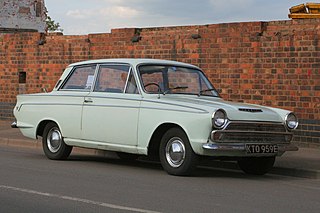
The Ford Cortina is a medium-sized family car manufactured and marketed initially by Ford of Britain, and then Ford of Europe in various body styles from 1962 to 1982 over five generations — and was the United Kingdom's best-selling car of the 1970s.

The Volkswagen Polo is a supermini car (B-segment) produced by the German car manufacturer Volkswagen since 1975. It is sold in Europe and other markets worldwide in hatchback, saloon, and estate variants throughout its production run.
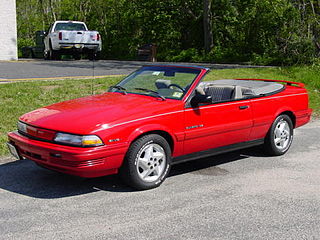
The Pontiac Sunbird is a model line that was manufactured and marketed by Pontiac from the 1976 to the 1994 model years. Loosely deriving its name from the Pontiac Firebird, the Sunbird was introduced as the eventual replacement for the Pontiac Astre, replacing it entirely in 1978 as the smallest Pontiac.

The Ford Versailles was a mid-size automobile between 1991 and 1996 in Brazil and Argentina. It was a version of the Volkswagen Santana sold in the 1990s, when Ford and Volkswagen shared models in South America in a joint venture known as Autolatina. It replaced the Ford Del Rey in Brazil and the locally built Ford Sierra in Argentina. The station wagon version was sold as the Ford Royale.

The Volkswagen Santana is a nameplate used by Volkswagen for various sedans and station wagons since 1983. The first generation is based on the second-generation Volkswagen Passat (B2). It was introduced in 1981 while production started in 1983 for China. The use of the "Santana" badge rather than "Passat" echoes the use of different names for the sedan versions of the Polo (Derby) and Golf (Jetta).

The Volkswagen Gol is a subcompact car that has been manufactured by Volkswagen do Brasil since 1980 as Volkswagen's entry-level car in the Latin American market—where it succeeded the Volkswagen Type 1 (Fusca) and the Volkswagen Brasilia. Several variants of the Gol-derived Voyage and Parati were marketed in North America as the Volkswagen Fox from 1987 to 1993.

The Ford Corcel is a family car which was sold by Ford do Brasil in Brazil, Chile, Uruguay, Paraguay and Venezuela. It was also assembled in Venezuela. The French-influenced styling of the Corcel was unique to Brazil until late 1977. From this year, the redesigned Corcel II bore a strong resemblance to the European Ford Escort and Ford Cortina of same era, but its Renault underpinnings remained the same. The Corcel was eventually replaced by the Del Rey, which was originally introduced as a better equipped version of the Corcel.
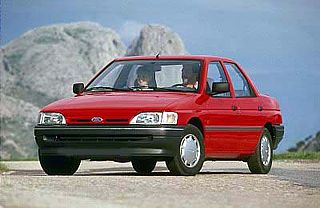
The Ford Verona and Volkswagen Apollo are a pair of small family cars that were manufactured in Brazil by Autolatina, a joint venture between Brazilian subsidiaries of Ford and Volkswagen. The Verona was produced from 1989 to 1992 and from 1993 to 1996, initially as a direct replacement for the ageing Ford Del Rey.
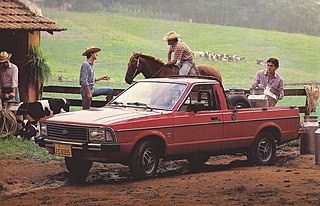
The Ford Pampa is a coupe utility manufactured by Ford do Brasil between 1982 and 1997. It was derived from the Ford Corcel and Ford Del Rey, and was the best-selling coupe utility in Brazil for several years.

The Ford Fairmont is a model line of compact cars that was manufactured by Ford from the 1978 to 1983 model years. The successor of the Ford Maverick, the Fairmont marked the third generation of compact sedans sold by Ford in North America. Initially slotted between the Pinto and Granada within the Ford line, the Fairmont was later marketed between the Ford Escort and Ford LTD. In contrast to its predecessor, the model line was offered as a two-door notchback sedan, two-door coupe, four-door sedan, and five-door station wagon. Though never sold as a Lincoln, Mercury sold a divisional counterpart of the Fairmont as the Mercury Zephyr.

The Volkswagen Type 2 (T3) was the third generation of the Volkswagen Transporter and was marketed under various nameplates worldwide – including the Transporter or Caravelle in Europe, T25 in the UK, Microbus in South Africa, and Vanagon in North and South America.
The Ford CHT engine is an inline four-cylinder internal combustion engine family produced by the Ford Motor Company in Brazil during the 1980s and 1990s. It was derived from the Renault Cléon-Fonte engine. It is unrelated to the similarly-named Ford CVH engine.

The Ford Escort is a small family car that was manufactured by Ford of Europe from 1968 until 2000. In total there were six generations, spread across three basic platforms: the original, rear-wheel-drive Mk.1/Mk.2 (1968–1980), the "Erika" front-wheel-drive Mk.3/Mk.4 (1980–1992), and the final CE-14 Mk.5/Mk.6 (1990–2002) version. Its successor, the Ford Focus, was released in 1998, but the final generation of Escort was phased out gradually, with the panel van version ending production in 2002 in favour of the Ford Transit Connect.
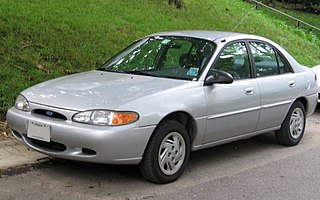
The North American version of the Ford Escort is a range of cars that was sold by Ford from the 1981 to 2003 model years. The direct successor of the Ford Pinto, the Escort also largely overtook the role of the European-imported Ford Fiesta as the smallest vehicle in the Ford model line in North America. Produced across three generations, the first generation was a subcompact; the latter two generations were compact cars. Becoming highly successful in the marketplace, the Escort became the best-selling car in the United States after 1982, a position it would hold for much of the 1980s.

The Volkswagen Brasília is a rear-engined compact car developed by Volkswagen do Brasil and internally designated as the Type 321. Named for Brazil's capital city, the car was manufactured and marketed by Volkswagen in Brazil from 1974 to 1982; in Mexico from 1975 to 1982; and built from knock down kits in Nigeria, where it was marketed as the Igala from 1976 to 1980.

The Cléon-Fonte engine is a family of inline four-cylinder automobile engines developed and manufactured by Renault. It has also been called the Sierra engine, the C-engine, or the C-Type. It has been in continuous production by Renault or a licensee from 1962 to 2004. After about three decades of use in Renault's compact models, it was gradually replaced by the E-type engine from the late 1980s onward.

Ford Brasil is the Brazilian subsidiary of American automaker Ford Motor Company, founded on April 24, 1919. The operation started out importing the Ford Model T cars and the Ford Model TT trucks in kit form from the United States for assembly in Brazil. The Ford brand, however, had already been present in the country since 1904 with both vehicles being sold in Brazil.

The North American version of the Ford Granada is a range of sedans that was manufactured and marketed by Ford over two generations (1975–1982). Developed as the original successor for the Ford Maverick, the Granada shares its name with Ford of Europe's flagship sedan. The model line was marketed as a luxury compact vehicle, expanding the segment in the United States.
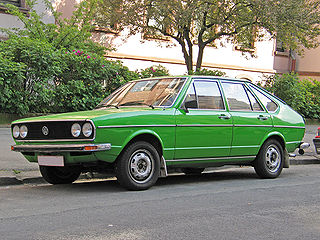
The Volkswagen Passat (B1) is a large family car produced by Volkswagen in West Germany from 1973 to 1981.

The Volkswagen Passat (B2) is an automobile which was produced by German manufacturer Volkswagen from 1981 to 1988. It was the second generation of the Volkswagen Passat. The platform was slightly longer than the preceding Passat (B1). As with the previous generation, it was based on the platform of the Audi 80; the corresponding B2 version of which had been already launched in 1978. The Santana was also manufactured in China, Brazil, Mexico and Argentina. In Brazil, the Santana station wagon was sold as the Quantum. In the United States, both the Santana sedan and station wagon were sold as the Quantum. The Passat saloon and estate were produced in South Africa for their local market until 1987. The production of Passat B2 in China ended in January 2013.






















